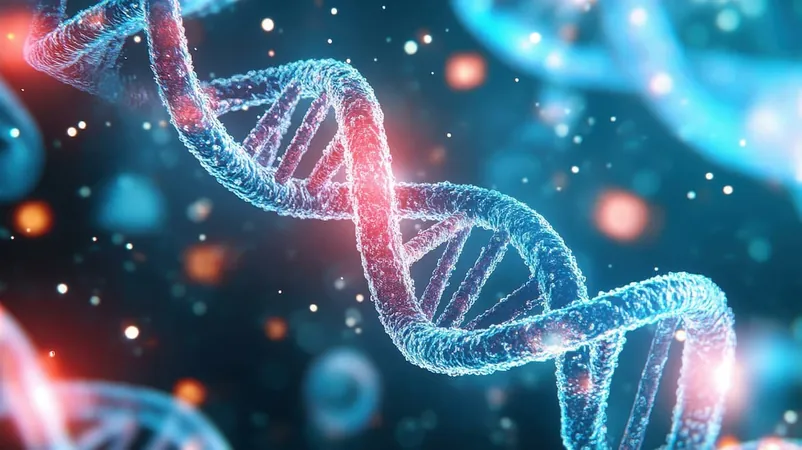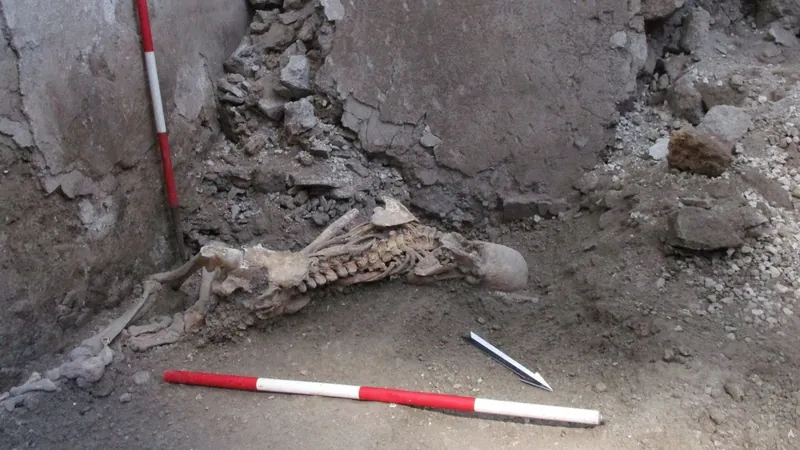
Shocking Research Reveals NUP98 Rearrangements May Lead to Dismal Outcomes in AML Patients!
2024-11-15
Author: Li
Introduction
A groundbreaking systematic review and meta-analysis published in the esteemed Caspian Journal of Internal Medicine sheds light on the troubling prognostic impact of NUP98 rearrangements in acute myeloid leukemia (AML). This pivotal study closely examined two critical NUP98 fusions: NUP98-NSD1 and NUP98-KDM5A, revealing a dire connection to overall survival (OS) and event-free survival (EFS) for patients grappling with this aggressive form of leukemia.
Study Details
The researchers, hailing from multiple esteemed institutions in Iran, meticulously analyzed data from 15 publications encompassing a significant cohort of 6,142 AML patients. Alarmingly, their findings indicated that the NUP98-NSD1 fusion is closely linked to unfavorable prognoses in AML cases.
Findings on NUP98-NSD1
In an univariate analysis involving 581 patients, the data revealed that those with NUP98-NSD1 faced a staggering increased risk of bad outcomes (pooled HR, 3.67; 95% CI, 2.80–4.82; P = .000), with no observable heterogeneity (I²=0%; P = .322). The multivariate analysis, examining a total of 4,010 patients, corroborated these results, showing a worrying trend of poor overall survival (pooled HR, 2.84; 95% CI, 2.49–3.24; P = .000), albeit with significant heterogeneity (I²=96.65%; P = .018).
Event-Free Survival Analysis
In terms of event-free survival, the aggregated numbers from two multivariate analyses involving 1,486 individuals also illustrated a significantly grim prognosis (pooled HR, 2.79; 95% CI, 1.87–4.16; P = .000). Interestingly, earlier studies highlighted that NUP98-NSD1 is predominantly observed in the pediatric population, with those affected averaging just 9.1 years of age. However, due to insufficient data, the latest analysis couldn't differentiate outcomes between children and adults.
Importance of Screening
Furthermore, the researchers emphasized the importance of integrating NUP98-NSD1 into routine screening protocols, minimal residual disease (MRD) monitoring, and treatment response assessments for AML patients. Due to its cryptic characteristics, which make it undetectable via conventional karyotyping, advanced techniques such as RT-PCR and sequencing are required for accurate identification.
NUP98 and FLT3-ITD Mutation
The study also tackled the intricate relationship between the NUP98-NSD1 fusion and the frequently encountered FLT3-ITD mutation. A comprehensive meta-analysis of three studies with 543 patients indicated that co-occurrence of these mutations leads to a pooled HR for overall survival of 2.60 (95% CI, 1.61–4.18; P = .000). While the findings were consistent, the study observed moderate heterogeneity (I²=60.71%; P = .078). The event-free survival analysis mirrored this trend with a pooled HR of 2.82 (95% CI, 1.86–4.26; P = .000) and lower heterogeneity (I²=29.42%; P = .242).
Prognostic Effects Without FLT3-ITD
Notably, the authors identified only one study that assessed the prognostic effects of NUP98-NSD1 in AML patients without FLT3-ITD. Intriguingly, this analysis showed that NUP98-NSD1 conferred a favorable prognosis in these individuals compared to those with the mutation (HR, 0.34; 95% CI, 0.048–2.4). This tantalizing finding underscores the urgent need for further research to elucidate the prognostic implications of NUP98-NSD1 among AML patients without FLT3-ITD.
NUP98-KDM5A Fusion
Likewise, the meta-analysis reviewed the NUP98-KDM5A fusion, which appears frequently in pediatric cases of acute megakaryoblastic leukemia. Results indicated significantly worse outcomes associated with this rearrangement, with a pooled HR for overall survival standing at 2.65 (95% CI, 2.50–2.81; P = .000) and no heterogeneity (I²=0%; P = .553). The trends in event-free survival mirrored this negativity as well.
Study Limitations
While the findings of this study provide alarming insights into the poor prognoses tied to NUP98 rearrangements, limitations remain. Co-occurring genetic abnormalities, including mutations in WT1 and NPM1, could potentially have influenced the observed heterogeneity. Additionally, variances in treatment regimens and patient demographics across the included studies may also have affected the final conclusions drawn.
Conclusion
In summary, this research emphasizes the critical need for enhanced genetic screening and tailored therapeutic approaches to improve outcomes for AML patients harboring NUP98 rearrangements. The future of AML treatment hangs in the balance—will advancements in genetic understanding lead to tailored therapies that can turn the tide against these harsh prognostic factors? Stay tuned as researchers delve deeper into this crucial area of study!



 Brasil (PT)
Brasil (PT)
 Canada (EN)
Canada (EN)
 Chile (ES)
Chile (ES)
 España (ES)
España (ES)
 France (FR)
France (FR)
 Hong Kong (EN)
Hong Kong (EN)
 Italia (IT)
Italia (IT)
 日本 (JA)
日本 (JA)
 Magyarország (HU)
Magyarország (HU)
 Norge (NO)
Norge (NO)
 Polska (PL)
Polska (PL)
 Schweiz (DE)
Schweiz (DE)
 Singapore (EN)
Singapore (EN)
 Sverige (SV)
Sverige (SV)
 Suomi (FI)
Suomi (FI)
 Türkiye (TR)
Türkiye (TR)